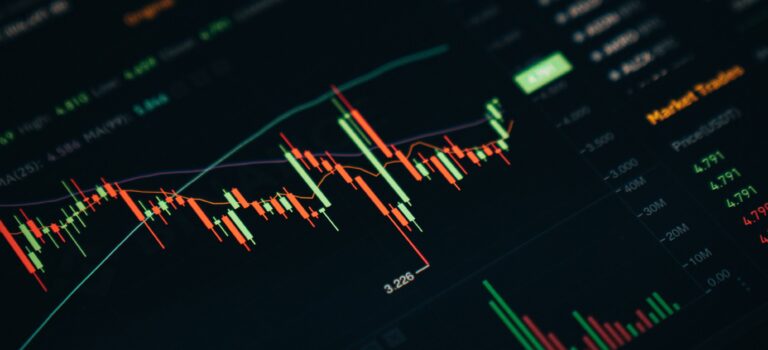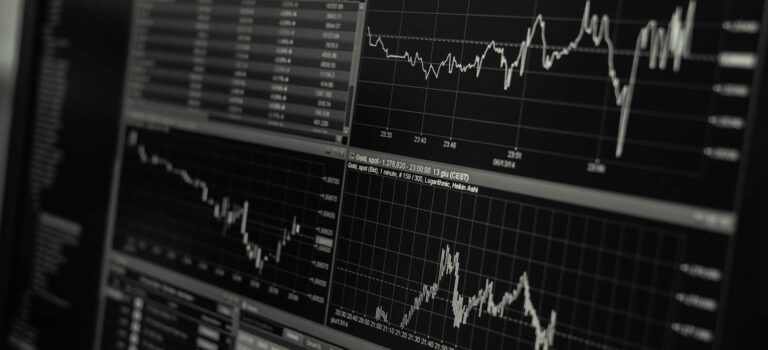Click Here to view today’s Global Momentum Guide The MSCI EAFE climbed 2.16 percent last week, the Russell 2000 Index 1.52 percent, the Dow Jones Industrial Average 1.20 percent, […]


Click Here to view today’s Global Momentum Guide The MSCI EAFE climbed 2.16 percent last week, the Russell 2000 Index 1.52 percent, the Dow Jones Industrial Average 1.20 percent, […]

The Investor Guide to Fidelity Funds for April 2023 is AVAILABLE NOW! April Data Files Are Posted Below Market Perspective: Tech Stocks Rally as Government Bails out Banks The Nasdaq surged […]
In 2022, long-term U.S. Treasury bonds suffered their worst performance since the early days of the American republic. Rising inflation, along with Federal Reserve rate increases, sent bond prices tumbling. This wasn’t the start of the move though. Bonds peaked during the March 2020 lockdowns and had been falling steadily since then. It’s likely that last year’s low will hold for some time. As long as inflation is brought under control, interest rates on corporate bonds already compensate investors well for inflation risk. If inflation falls further, government bonds are also compelling options for fixed income investors.
The most volatile part of the government bond market is long-term Treasury bonds. In the U.S., that is the 30-year bond. These bonds fluctuate greatly when interest rates make large moves up or down because they are valued on 30 years’ worth of cash flows along with the return of principal. The most volatile security is the zero-coupon bond because all the cash flow comes 30 years from now. Any change in the interest rate is compounded for 30 years.
EDV is a zero-coupon bond fund that owns Treasury STRIPS with maturities of 20 to 30 years. This gives it one of the longest durations in the market at 24.23 years.
Duration is a measure of interest rate risk. Most investors are familiar with the concept of a bond’s maturity. That’s how many years it has until it matures and the principal is repaid. Bonds with high coupons, such as high-yield bonds, have durations lower than their maturity. In the case of zero-coupon bonds, they have durations that match their maturity.
A rule of thumb says that a bond or bond fund’s price will move about 1 percent multiplied by the duration, for a 1 percent move in the interest rate. Last year, both the 20-year and 30-year Treasury bond climbed about 2 percentage points. This would make for a possible 48 percent move in the price of EDV. In fact, the fund fell 39.16 percent, a bit better than expected.
Since the end of 2022, the 30-year Treasury yield has fallen about 0.3 percentage points. Multiply change in yield by EDV’s duration of 24.23 years and we get a number close to the 8.50 percent gain in EDV in 2023.
Reward-Free Risk
During periods of quantitative easing, the Federal Reserve cut interest rates to zero and held them there. At that time, some financial analysts and commentators referred to long-term Treasury bonds as “return-free risk,” a play on the term “risk-free rate” which refers to the 3-month Treasury bill rate. They called long-term bonds “return-free risk” because at the depth of the 2020 panic, 30-year Treasury bonds yielded less than 1 percent. Assuming interest rates would not go negative, there was almost zero upside in owning 30-year bonds even before considering future inflation. Their warning was prescient because between EDV’s all-time high in March 2020 and the low in October 2022, it would lose 55 percent of its value.
Today, the picture has changed. The Federal Reserve is still raising interest rates, but we’ve started seeing strain in the financial system. The failure of SVB Financial destroyed tens and perhaps hundreds of billions in capital, along with the tens of billions in stock market capitalization. This is deflationary and will help depress the rate of inflation moving forward. If more banks come under stress, the Federal Reserve will not continue its rate hiking policies. In short, we’re very close to the peak interest rate for this cycle.
Bonds Versus Stocks
During the era of quantitative easing, many bonds offered little in the way of income. Since the return on bonds was depressed, investors switched into high-yield debt for income or stocks in pursuit of capital gains. For much of this period, stocks were “cheap” relative to bonds because the latter offered so little in the way of return. In 2022, that started changing. In 2023, the yield on investment grade corporate bonds exceeded that of the S&P 500’s earnings yield (the inverse of the price-to-earnings ratio).
Comparing the S&P 500 earnings yield with investment grade corporate bond yield is a simple way to determine if stocks are over- or undervalued versus bonds. At current rates and stock valuations, investment grade corporate bonds are cheaper. However, this ignores that stocks are riskier on the whole. Stocks should trade at a discount to bonds because stock prices fluctuate more than bond prices. An investor who buys a bond and holds it to maturity is guaranteed the nominal return.
When investment grade corporate bonds offer a better yield than that of the S&P 500 Index, stocks are quite overvalued according to this measure. To wit, the last time corporate bonds had a higher yield than the S&P 500 earnings yield was in the late 1990s and 2007, both periods of stock overvaluation. However, in both cases this result was caused by extreme overvaluation of stocks and, naturally, bear markets ensued.
Given what we’ve seen in financial markets over the past month with increasing stress in the banking sector, it appears that long-term interest rates have peaked for this cycle. If long-term interest rates have peaked, long-term government bonds offer a compelling opportunity.
The likelihood of large losses in bonds is lower than it was at any time in the prior three years. In some scenarios where bonds lose big, stocks could lose more, meaning investors with growth and tech exposure are already taking on this risk. There are also scenarios where bonds win and stocks lose. All in all, there is a compelling argument for holding a fund such as EDV in place of some equity exposure, particularly in place of aggressive growth or technology stocks.
Vanguard Extended Duration
EDV tracks the Bloomberg U.S. Treasury STRIPS 20-30 Year Equal Par Bond Index. It currently holds 80 bonds. The average duration is 24.2 years, and the average maturity is 24.7 years. The expense ratio is 0.06 percent. The 30-day SEC yield is 3.99 percent.
EDV has 1-, 3-, 5-, 10- and 15-year annualized returns of negative 29.36 percent, negative 18.74 percent, negative 1.46 percent, positive 1.55 percent and positive 4.58 percent, respectively.
EDV has a standard deviation of 19.32. For comparison, the S&P 500 Index has a standard deviation of 20.74, making EDV almost as volatile as the stock market.
Outlook
Bonds are finally offering investors a compelling value proposition following last year’s sell-off. For the first time in years, investors can take on less credit risk and obtain meaningful income from investment grade corporate bonds and U.S. Treasuries. Longer-duration funds such as EDV also offer a better risk-reward proposition compared with growth stocks such as the Nasdaq or technology indexes.
This is even more pertinent if investors worry about recession risk and further downside in stocks, or if they believe long-term interest rates have peaked. A fund such as EDV can replace some of the tech or growth exposure in a portfolio, offering investors potential upside in scenarios where interest rates tumble in response to a recession or bear market in stocks.
EDV is not as compelling a holding within a portfolio’s bond sleeve because it is highly volatile and does have downside volatility risk. The income from EDV is not worth the risk when there are far less risky bond funds offering similar and, in many cases, higher yields. Investors would increase their overall portfolio volatility and risk if they swapped lower-risk, shorter-term bonds for a fund such as EDV. Compared with a fund such as Vanguard Information Technology (VGT) however, EDV doesn’t add that much risk and offers a different matrix of performance outcomes than do stocks.
In conclusion, for investors worried about recession and falling equity prices, and who believe long-term interest rates may have peaked, long-term bonds offer diversification. Long-term government bonds can rally if inflation falls, and they can rally if there is a bear market or recession that depresses interest rates. They might lag stocks in some of the “Goldilocks” scenarios, but when considering both the potential upside and downside of the technology and growth sectors of the market, a small allocation to EDV within a portfolio’s equity allocation can provide a measure of diversification without the kind of downside risk that such a position would have had for much of the previous decade.
Interested in continuing to receive strategic guidance on Vanguard Funds? Subscribe to the Investor Guide to Vanguard Funds today to gain immediate access to our full archives, including our most recent issue.

The week leading up to Good Friday and Easter got off to a quick start as the Institute for Supply Management (ISM) released its March Manufacturing PMI number. The final result was 46.3, which was below the forecast of 47.7 and was the fifth straight month in which the PMI number was below 50.
This indicates a contraction within the manufacturing sector that may be a precursor to a larger economic slowdown. It may also be a sign that the Federal Reserve may have to rethink future interest rate hikes. The federal funds rate currently sits at 5 percent after it was raised by 25 basis points in March. Federal Reserve Chairman Jerome Powell has indicated that additional increases may be warranted but that they would be dependent on future data.
On Tuesday, the Job Openings and Labor Turnover Survey (JOLTS) was released. It found that there were 9.93 million available positions in the United States, which was the lowest since the 9.21 million recorded in July 2021. Analysts had expected the March figure to be closer to 10.49 million prior to the survey’s release.
Wednesday saw the release of important reports both before and after the trading day began in New York. At 8:15 a.m., the ADP Nonfarm Employment Change report was released and declared that 145,000 jobs were lost between February and March. Prior to release, it was believed that the report would show a gain of 208,000 jobs. At 10 a.m., the ISM Services PMI was released and came in at 51.2 percent, which was lower than the forecast estimate of 54.3 percent.
The news did provide some opportunities for traders looking to buy dips or to make short-term trades. On Monday, the S&P broke the 4,100 level, which was a yearly high, and the market continued higher on Tuesday before reversing and settling into a trading range between 4075 and 4115 for most of Wednesday and Thursday. For the week, the index lost 0.1 percent, lowering the yearly gain to 6.9 percent.
The Dow spent most of the week between 33,000 and 33,500, which is a retest of a high set in March. For the week the Dow gained 0.6 percent and has now gained 1.0 percent gain in 2023.
The NASDAQ peaked at 13,192 on Tuesday before easing back to 13,086 at the close of trading on Thursday. This index has gained over 15 percent in 2023, despite dropping 1 percent on the week.
Gold spent the first three days of the week making significant gains as it surged from the 1950 level to 2025 by Wednesday. This represents the high of the year and a break of a high set in February. Although gold prices fell slightly on Thursday, they are still hovering close to $2,000 an ounce. An increase in gold prices combined with a contraction in the manufacturing and services sectors may be a sign that investors are trying to hedge against near-term uncertainty.
Oil prices quickly climbed above $80 a barrel on Monday before trading mostly sideways on Tuesday, Wednesday and Thursday. This represents a break above the March high and puts the commodity in position to threaten yearly highs going into the holiday weekend. Exxon stock jumped from $109.44 at the close of trading on March 31 to $114.92 upon the opening bell Monday morning. It would then peak at $117.18 during Monday’s session before dropping 2 percent on Thursday to close at $115.06.
The CBOE Market Volatility Index (VIX) stayed in a tight range for most of the week as traders were not keen to make major moves in anticipation of Friday’s Nonfarm Payroll report issued by the Bureau of Labor Statistics (BLS). That report showed that the economy gained 236,000 jobs in March, and the unemployment rate dropped from 3.6 percent to 3.5 percent. Average hourly earnings went up .3 percent during that period, which beat the forecast of .2 percent.

Click Here to view today’s Global Momentum Guide The Dow Jones Industrial Average gained 0.63 percent last week and the MSCI EAFE 0.37 percent. The S&P 500 Index fell […]